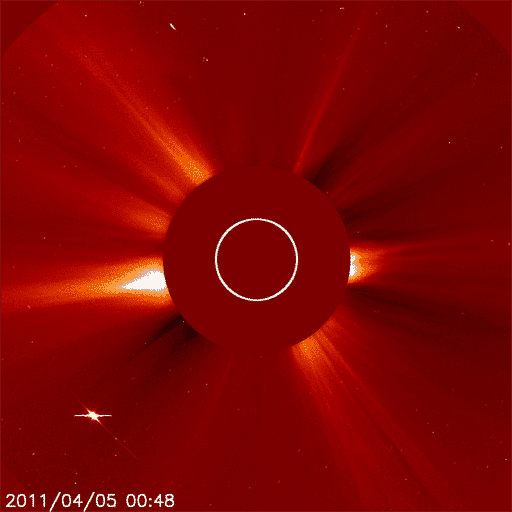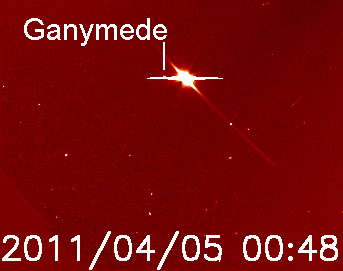Emily Lakdawalla • Apr 06, 2011
Spotting Jupiter's Moons...with a Solar Telescope!?
It's not uncommon to see planets wandering through the field of view of a solar telescope, and when it's a bright planet like Jupiter it's almost painfully obvious. But I was astounded to learn this morning that SOHO can not only see Jupiter, it can actually resolve Jupiter's moons (at least its two outer ones) as points of light separate from their planet! That's just plain cool.
Here's an animation composed of one day's worth of SOHO images, roughly one frame per hour. SOHO's LASCO camera actually gathers images at about five times that frame rate, but this was enough detail to see the motion. It would've been cool if there were a major solar prominence that day, but it seems to have been a relatively quiet day on the Sun; there's something interesting happening at about the 4:30 position but the most prominent activity in this animation is the rapid motion of Jupiter across the frame.

And here's an animation of the full-resolution data, zoomed in on Jupiter. There's various noise and background stars moving about, but just to the left and right of Jupiter, just above and below the "wings" of saturated pixels streaking to the left and right, you can see two tiny little dots that move in a steady fashion from left to right. The left-hand one is Ganymede; the right-hand one is Callisto. These are the outermost of Jupiter's moons, so Io and Europa must also be within view, but are lost in the glare of the planet.

Thanks to @SungrazerComets for the tip!
Let’s Go Beyond The Horizon
Every success in space exploration is the result of the community of space enthusiasts, like you, who believe it is important. You can help usher in the next great era of space exploration with your gift today.
Donate Today

 Explore Worlds
Explore Worlds Find Life
Find Life Defend Earth
Defend Earth

